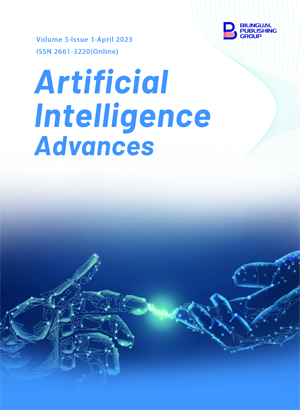-
189
-
185
-
163
-
157
-
149
Real-Time Personalized Ad Recommendation Based on User Behavioral Analysis
DOI:
https://doi.org/10.30564/aia.v7i1.9761Abstract
Real-time personalized ad recommendation systems are crucial for enhancing user engagement and satisfaction. To address the challenge of delivering highly relevant ads in a dynamic, large-scale environment, this paper proposes a novel approach that integrates real-time user behavior analysis with advanced time series modeling and stream processing techniques. Specifically, the system leverages Long Short-Term Memory (LSTM) networks to capture both short-term and long-term user preferences, ensuring accurate and personalized ad recommendations. By utilizing stream processing frameworks like Apache Kafka and Apache Flink, the system supports high-throughput data ingestion and low-latency processing, even under high user concurrency. Experimental results demonstrate that the proposed system outperforms traditional methods and state-of-the-art models in terms of recommendation accuracy, response time, and user satisfaction. This approach offers significant advantages in real-time ad delivery and provides a scalable, efficient solution for personalized advertising in large-scale applications.
Keywords:
Real-Time Personalized Ad Recommendation, Long Short-Term Memory Networks, Stream Processing Frameworks, User Behavior Analysis, High-Throughput and Low-Latency Real-Time AdvertisingReferences
[1] Adomavicius, G., Tuzhilin, A., 2005. Toward the next generation of recommender systems: A survey of the state-of-the-art and possible extensions. IEEE Transactions on Knowledge and Data Engineering, 17(6), 734–749. DOI: https://doi.org/10.1109/TKDE.2005.99
[2] Chen, X., Wang, M., Zhang, H., 2024. Machine learning-based fault prediction and diagnosis of brushless motors. Engineering Advances, 4(3).
[3] Yi, X., Hong, L., Zhong, E., et al., 2014. Beyond clicks: Dwell time for personalization. In Proceedings of the 8th ACM Conference on Recommender Systems (pp. 113–120). DOI: https://doi.org/10.1145/2645710.2645714
[4] Zanker, M., Jessenitschnig, M., 2009. Case-studies on exploiting explicit customer requirements in recommender systems. User Modeling and User-Adapted Interaction, 19, 133–166. DOI: https://doi.org/10.1007/s11257-008-9058-6
[5] Gan, Y., Chen, X., 2024. The research on end-to-end stock recommendation algorithm based on time-frequency consistency. Advances in Computer and Communication, 5(4).
[6] Gillespie, T., 2014. The relevance of algorithms. In T. Gillespie, P. J. Boczkowski, & K. A. Foot (Eds.), Media technologies: Essays on communication, materiality, and society. pp. 167–194. MIT Press.
[7] Klug, D., Qin, Y., Evans, M., et al., 2021. Trick and please: A mixed-method study on user assumptions about the TikTok algorithm. In Proceedings of the 13th ACM Web Science Conference 2021 (pp. 84–92). DOI: https://doi.org/10.1145/3447535.3462503
[8] Chen, Z., He, Q., Mao, Z., et al., 2019. A study on the characteristics of Douyin short videos and implications for edge caching. In Proceedings of the ACM Turing Celebration Conference - China. pp. 1–6. DOI: https://doi.org/10.1145/3344991.3349227
[9] Huang, Y., Wang, W., Zhang, L., et al., 2021. Sliding spectrum decomposition for diversified recommendation. In Proceedings of the 27th ACM SIGKDD Conference on Knowledge Discovery & Data Mining. pp. 3041–3049. DOI: https://doi.org/10.1145/3447548.3467283
[10] DeVito, M.A., Gergle, D., Birnholtz, J., 2017. “Algorithms ruin everything" #RIPTwitter, folk theories, and resistance to algorithmic change in social media. In Proceedings of the 2017 CHI Conference on Human Factors in Computing Systems. pp. 3163–3174. DOI: https://doi.org/10.1145/3025453.3025553
[11] Eslami, M., 2015. “I always assumed that I wasn't really that close to [her]": Reasoning about invisible algorithms in news feeds. In Proceedings of the 33rd Annual ACM Conference on Human Factors in Computing Systems (pp. 153–162). DOI: https://doi.org/10.1145/2702123.2702556
[12] Ma, J., Chen, X., 2024. Fingerprint image generation based on attention-based deep generative adversarial networks and its application in deep Siamese matching model security validation. Journal of Computational Methods in Engineering Applications, 1–13.
[13] Jhaver, S., Zhang, A.Q., Chen, Q.Z., et al., 2023. Personalizing content moderation on social media: User perspectives on moderation choices, interface design, and labor. Proceedings of the ACM on Human-Computer Interaction, 7(CSCW2), 1–33. DOI: https://doi.org/10.1145/3610099
[14] Ma, J., Zhang, Z., Xu, K., et al., 2025. Improving the applicability of social media toxic comments prediction across diverse data platforms using residual self-attention-based LSTM combined with transfer learning.
[15] Kim, H., Lim, Y.-K., 2023. Investigating how users design everyday intelligent systems in use. In Proceedings of the 2023 ACM Designing Interactive Systems Conference (pp. 702–711). DOI: https://doi.org/10.1145/3563657.3596110
[16] Ma, J., Wilson, A., 2025. Mitigating FGSM-based white-box attacks using convolutional autoencoders for face recognition.
[17] Jannach, D., Lerche, L., Zanker, M., 2018. Recommending based on implicit feedback. In P. Brusilovsky & A. Kobsa (Eds.), Social information access: Systems and technologies (pp. 510–569). Springer. DOI: https://doi.org/10.1007/978-3-319-90092-6_14
[18] Zhang, G., Zhou, T., Cai, Y., 2023. CORAL-based domain adaptation algorithm for improving the applicability of machine learning models in detecting motor bearing failures. Journal of Computational Methods in Engineering Applications, 1–17.
[19] Lu, P.-M., Zhang, Z., 2025. The model of food nutrition feature modeling and personalized diet recommendation based on the integration of neural networks and K-means clustering. Journal of Computational Biology and Medicine, 5(1).
[20] Gan, Y., Zhu, D., 2024. The research on intelligent news advertisement recommendation algorithm based on prompt learning in end-to-end large language model architecture. Innovations in Applied Engineering and Technology, 1–19.
[21] Kelly, D., Teevan, J., 2003. Implicit feedback for inferring user preference: A bibliography. ACM SIGIR Forum, 37(2), 18–28. DOI: https://doi.org/10.1145/945546.945550
[22] Zhang, H., Zhu, D., Gan, Y., et al., 2024. End-to-end learning-based study on the Mamba-ECANet model for data security intrusion detection. Journal of Information, Technology and Policy, 1–17.
[23] McCrosky, B.R., Mozilla Foundation, 2022. Does this button work? Investigating YouTube’s ineffective user controls. Mozilla Foundation. https://www.mozillafoundation.org/en/research/library/user-controls/
[24] Van der Nagel, E., 2018. ‘Networks that work too well’: Intervening in algorithmic connections. Media International Australia, 168(1), 81–92. DOI: https://doi.org/10.1177/1329878X18783004
[25] Wilson, A., Ma, J., 2025. MDD-based domain adaptation algorithm for improving the applicability of the artificial neural network in vehicle insurance claim fraud detection. Optimizations in Applied Machine Learning, 5(1).
Downloads
How to Cite
Issue
Article Type
License
Copyright © 2025 Yu Qiao, Kaixian Xu, Alan Wilson

This is an open access article under the Creative Commons Attribution-NonCommercial 4.0 International (CC BY-NC 4.0) License.




 Yu Qiao
Yu Qiao





